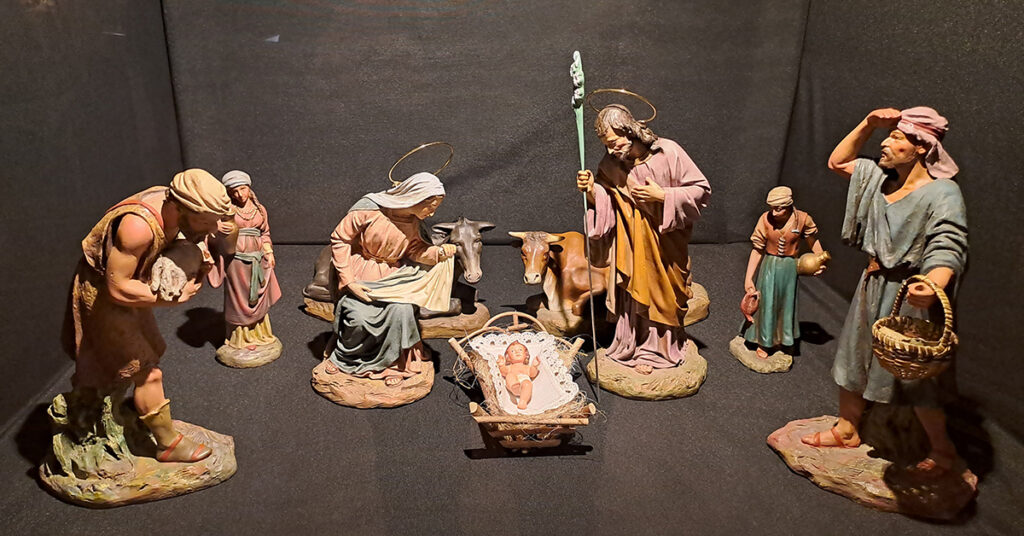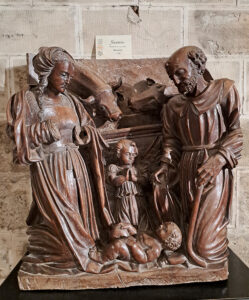Basque ethnography at a glance
It must be recognized that, when Christmas arrives, putting up the nativity scene at home or in the parish is a custom strongly rooted in our country. It is also true that this not only happen in this Basque-Navarrean land, but throughout the Christian community. Precisely this month of December 2023 marks the 800th anniversary of that first nativity scene in history, a live nativity scene, made of flesh and blood, except for the Child who was a figurine. This took place in Italy, at the initiative of Saint Francis of Assisi. Therefore, it was in December 1223 when the nativity scene tradition began to take shape, initially as living nativity scenes, and shortly after based on figurines. These were born as a pedagogical tool of the Franciscans to teach the biblical passages of Matthew and Luke that narrate the Nativity of Jesus, to a society that mostly did not know how to read. From that moment onwards, it was the Franciscans and the Clarisses (female branch of the former) who maintained and extended this tradition.
At first we said it was a “custom firmly rooted in our land”, not in vain. We must not forget that the first convent of the Franciscans of the world was accidentally founded in Navarre, in the town of Rocaforte, in the year 1213. Nor should we forget that the first convent of the Clarisses outside Italy was founded in Pamplona in 1225. As a result of these two memorable historical moments, the representation of nativity scenes has an almost original cradle in this country; therefore, the number of ancient figures preserved here, the antiquity of associationism around these representations of the birth, and the extent of it, is not to be expected.
Add to all this fact that along with the nativity scenes, the pastorelas emerged simultaneously. A musical-theatrical genre that makes those first figures not only living but also acting, singing and playing instruments. Pastorals can still be found, as testimony, in South America, as a cultural heritage of the Franciscan missionaries; and it is not by chance that the last hideout has been held here in the convent of Santa Clara in Tolosa (Gipuzkoa), which has lasted until the last quarter of the twentieth century in the convent of the Clarisas. With these extinct as an immaterial living expression, a rich material heritage associated with them survives in this convent. We are talking about a drum, tambourines, cymbals, a triangle, castanets, a guitar… and the recording of the last religious people who brought this genus to life, which tells us what those pastorals that disappeared from convent life were like.
In December 2023, we will commemorate and celebrate the eight-century depiction of Christmas births, with a prior statement published in the BOE (Official State Gazette) on 15 June 2022 and reflected in Royal Decree 481/2022 of 14 June. This decree officially declared Christmas births (nativity scenes) as an Indicative Declaration of the Intangible Cultural Heritage, making clear its importance in our society and its growing roots in our identity.
Fernando Hualde – Ethnographer – Labrit Heritage



